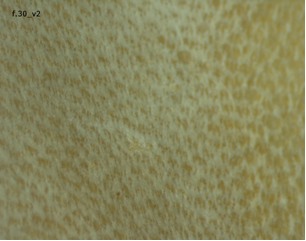The Original Writing Materials
Parchment is animal skin (such as sheep, goat, cow, hare, horse, or deer) specially prepared to be used as a writing material.
Vellum is made specifically from the skin of a calf specially prepared to be used as a writing material or to create book covers. Using skins as a writing surface began as early as 400 BCE, though demand decreased in the 15th century when the production of paper gained popularity.
Both parchment and vellum are made by soaking the skins in lime and water for a week and a half while stirring the vat a few times a day. The skins are removed from the vat and placed fur side up on a convex surface, and the fur is then scraped off. The skins are then stretched on a wooden frame, and while wet, are scraped with a knife a second time. Once dry, the skins may be made smooth by scraping with a pumice stone and dusted with chalk powder. Finally they are cut out of their frames and are trimmed and shaped.
How can we tell the difference between vellum and parchment?
Vellum typically has a finer grain, fewer flaws, and fewer colour variations. As parchment is usually created from the skins of full-grown animals, the grain is more pronounced due to larger hair follicles and there may also be evidence of old scars and discolouration.
Coated Paper
There are many types of coated paper, which include clay coatings and polymer coatings. Polymer coatings are used to achieve physical characteristics, water resistance, and to prevent ink from feathering.
Some polymer coatings may have a sheen, or cause the paper to be stiff and inflexible, producing similar qualities to parchment and vellum. This can make identification difficult.
How can we tell the difference between animal skin and coated paper?
Is there a grain or are hair follicles visible? If so, it is vellum or parchment.
Is there a variation in colour? If there is, it is supporting evidence that it is animal skin, though a variation in colour alone is not strong enough evidence to determine that it is not coated paper.
Can it be flexed easily? Vellum and parchment are stiffer than coated paper.
Is there a variation in opacity? A variation in opacity, but not in thickness, is evidence that it may be animal skin.
Are there creases or tears? If so, place a magnification loupe along one edge and look for paper fibres. Animal skin will not have visible fibres.

